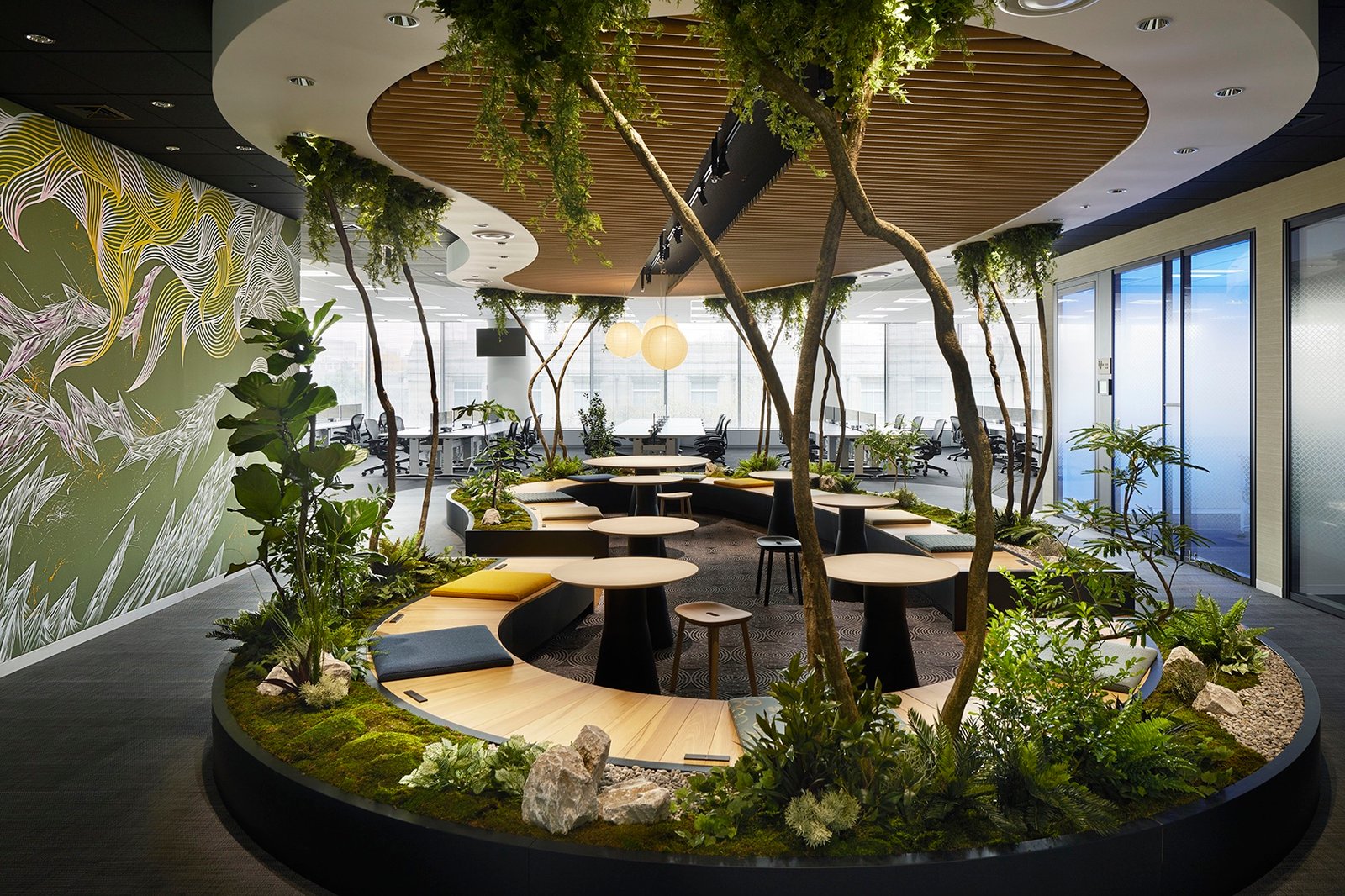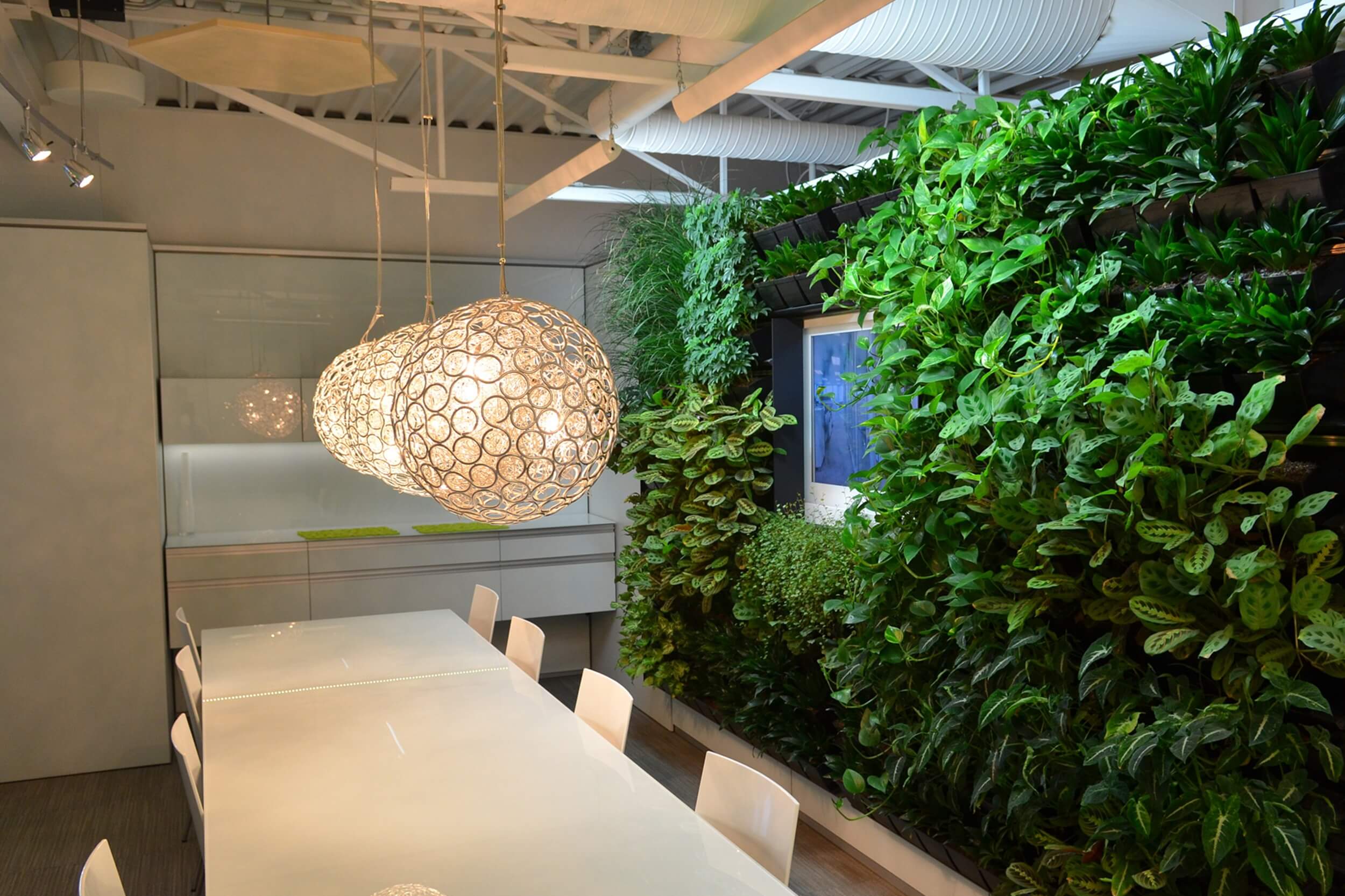
Incorporating greenery and biophilic design into modern spaces has become a growing trend in recent years. As our lives become more urbanized and technology-driven, there is a growing desire to reconnect with nature and create environments that promote well-being and sustainability. This article explores the concept of nature meeting modernity through the incorporation of greenery and biophilic design elements. We will discuss the benefits of biophilic design, explore different ways to incorporate greenery into indoor and outdoor spaces, and provide tips for creating a harmonious and sustainable environment.
The Benefits of Biophilic Design

Biophilic design is an approach that seeks to integrate natural elements into the built environment, creating a connection between people and nature. This design philosophy has been shown to have numerous benefits for our physical and mental well-being. Some of the key advantages of biophilic design include:
1. Improved air quality: Plants act as natural air purifiers, removing toxins and releasing oxygen. Incorporating greenery into indoor spaces can significantly improve air quality, reducing the risk of respiratory problems and allergies.
2. Stress reduction: Spending time in natural environments has been proven to reduce stress levels and improve overall well-being. Biophilic design elements, such as views of nature, natural materials, and soothing sounds of water, can help create a calming and stress-free environment.
3. Increased productivity: Studies have shown that incorporating biophilic elements into workspaces can boost productivity and creativity. Exposure to nature has been linked to improved concentration, memory, and problem-solving abilities.
4. Enhanced mood and happiness: Being surrounded by nature has a positive impact on our mood and happiness. Biophilic design can create a sense of tranquility and contentment, promoting emotional well-being.
Incorporating Greenery Indoors

Bringing nature indoors is a popular way to incorporate greenery and biophilic design into modern spaces. Here are some ideas for incorporating greenery indoors:
1. Houseplants: Adding houseplants to your space is a simple and effective way to bring nature indoors. Choose plants that thrive in the conditions of your space and consider their size, shape, and color to complement your interior design.
2. Living walls: Living walls, also known as vertical gardens, are becoming increasingly popular in interior design. These vertical installations consist of plants grown on specially designed panels or structures. Living walls not only add greenery but also serve as a unique and visually appealing focal point.
3. Natural materials: Incorporating natural materials like wood, stone, and bamboo into your interior design can create a sense of connection with nature. Use these materials for flooring, furniture, and decorative elements to add a touch of warmth and authenticity.
4. Natural light: Maximizing natural light is crucial for creating a biophilic indoor environment. Consider using large windows, skylights, and light wells to bring in as much natural light as possible. Natural light not only enhances the aesthetics of the space but also provides the necessary light for plant growth.
Bringing the Outdoors In: Outdoor Spaces

Creating outdoor spaces that seamlessly blend with nature is another way to incorporate greenery and biophilic design. Here are some ideas for bringing the outdoors in:
1. Outdoor seating areas: Design outdoor seating areas that are surrounded by greenery, such as gardens or vertical plantings. Use natural materials for furniture and incorporate comfortable cushions and throws to create a cozy and inviting atmosphere.
2. Water features: Incorporating water features, such as fountains, ponds, or waterfalls, can create a soothing and calming ambiance. The sound of flowing water promotes relaxation and adds a sense of tranquility to outdoor spaces.
3. Native plants: Choose native plants for your outdoor spaces to create a connection with the surrounding environment. Native plants are adapted to the local climate and require less maintenance, making them an eco-friendly choice.
4. Integrate natural elements: Use natural elements like rocks, boulders, and tree stumps to create natural focal points and add texture to outdoor spaces. These elements can serve as seating, decorative elements, or even as play areas for children.
Tips for Creating a Harmonious and Sustainable Environment

When incorporating greenery and biophilic design elements into modern spaces, it's essential to create a harmonious and sustainable environment. Here are some tips to achieve this:
1. Choose low-maintenance plants: Opt for plants that are easy to care for and require minimal watering and maintenance. This will ensure that your greenery thrives without putting excessive demands on resources.
2. Use sustainable materials: Select materials for your interior and exterior design that are environmentally friendly and sustainably sourced. This includes using recycled materials, natural fibers, and non-toxic paints and finishes.
3. Consider the local climate: When designing outdoor spaces, consider the local climate and choose plants and materials that are well-suited to the conditions. This will help minimize water usage and maintenance requirements.
4. Incorporate sustainable irrigation systems: Implement efficient irrigation systems, such as drip irrigation or rainwater harvesting, to minimize water waste and promote sustainable gardening practices.
Summary

Incorporating greenery and biophilic design into modern spaces is not only aesthetically pleasing but also offers numerous benefits for our well-being and the environment. Biophilic design promotes improved air quality, reduces stress, increases productivity, and enhances mood and happiness. Incorporating greenery indoors can be achieved through houseplants, living walls, natural materials, and maximizing natural light. Creating outdoor spaces that seamlessly blend with nature can be accomplished through outdoor seating areas, water features, native plants, and integrating natural elements. To create a harmonious and sustainable environment, choose low-maintenance plants, use sustainable materials, consider the local climate, and incorporate efficient irrigation systems. Embracing nature in our modern lives can bring us closer to the natural world and foster a sense of well-being and connection with our surroundings.